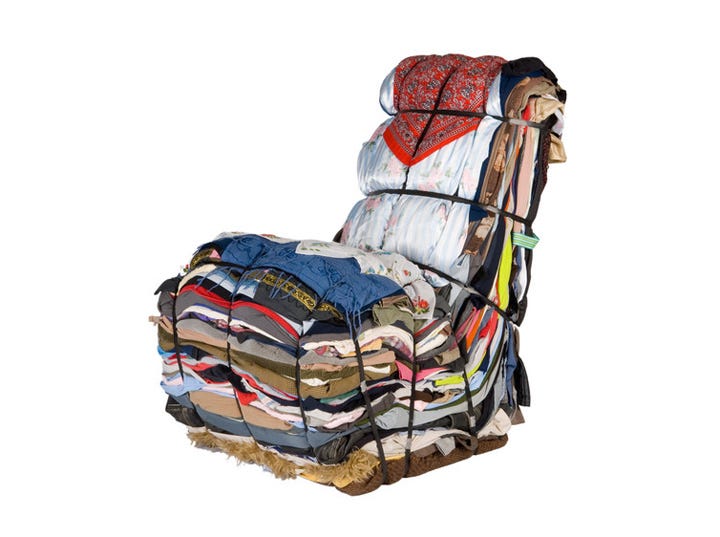This week’s Design Lobster is challenging received notions of beauty. We’ll be exploring the perverse appeal of ugly objects and admiring an unlovely but important example of 1990s chair design. Mirrors not advised…🪞💥
Question: What is the appeal of ugly design?

Many of you might already be following Ugly Design on instagram, where Jonas Nyffenegger and Sébastien Mathys document all manner of bafflingly hideous products. The misshapen and disconcertingly anatomical feature prominently (see the mug above) along with objects so abjectly odd, unappealing or downright nasty that it is mystifying why they were ever made at all.
In the previous Design Lobster we explored one example of Raymond Loewy’s work, who made it his life’s project to improve the appearance of the torrent of objects pouring off American production lines in the first part of the 20th century. Back then, his smooth, streamlined versions stood out in a sea of less harmonious and artful designs. Nowadays we live in a different world, where the cool simplicity exemplified by Apple devices pervades the mainstream of design culture. Paradoxically, it might be that in this historic moment the products which stand out are the ones which go against this grain by being odd, discordant or simply ugly.
Whether or not the popularity of the Ugly Design instagram heralds a broader aesthetic shift, I like the challenge it poses to conventional aesthetic dogma. As designers, we should always be questioning!
Design takeaway: Why not break a few aesthetic rules in your next design?
😖 For more ugly design, this is the instagram for you
Droog Rag Chair
This chair, made by designer Tejo Remy in 1991 for his graduation project compresses fifteen bags of second-hand clothes into shape using metal bands. Designed as a critique on consumerism, Tejo invited would-be buyers of the chair to provide their own unused garments so that the Rag chair would recall memories of when they had been by worn. It ain’t pretty but it makes a powerful point.
The chair made a splash at the 1993 Milan Furniture fair when Dutch design company Droog presented it alongside other “anti-luxury” products by up and coming designers like Hella Jongerius and Marcel Wanders. In stark contrast to the exuberance of the 80s, this new wave of design eschewed formal beauty for a junkyard “found” aesthetic and an environmental focus. Items like the Rag chair challenged notions of what we should consider beautiful and the systems and processes underlying aesthetic choices.
Design takeaway: How could your design re-use existing materials in a clever way?
▶️ Watch this profile on Droog and their impact on Dutch design
Quote: “The strange truth is: too much beauty would be intolerable, an awful world of meticulously cropped lawns and starched linen.”
– Stephen Bayley, author and curator
This quote comes from a 2013 essay by Stephen Bayley where he praises the way ugliness can surprise and challenge us, unlike beautiful things which soothe and sedate. Whereas beauty is full of rules, ugliness sets us free to explore new directions.
Have a beautiful week!
Ben 🦞
Enjoyed this week’s Design Lobster? Let me know by clicking the heart button ❤️
👇





Hey! Who took a photo of my belly!